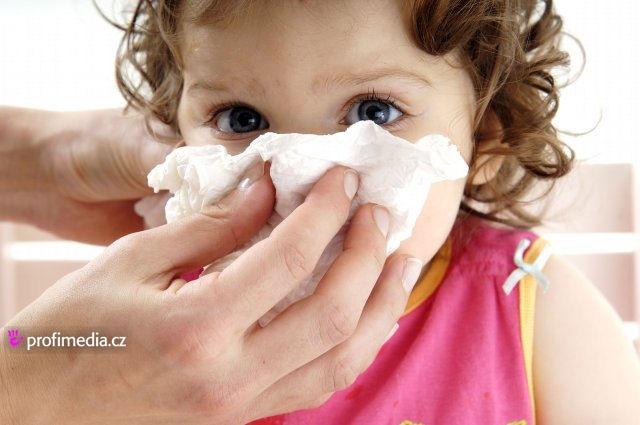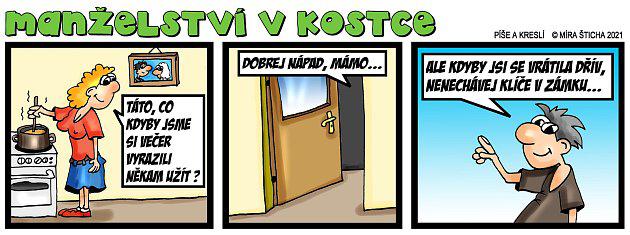How to fight childhood respiratory diseases<
How to fight children's respiratory diseases
The child's immune system is constantly maturing, which is why children are much more sensitive to various viruses and bacteria than adults. Especially if the child goes to a nursery or kindergarten. It takes a while for him to build up antibodies to most infections, which is why he is constantly ill or at least has a cold that he can't get rid of.
According to experts, this is a completely natural phenomenon, which is why most of them do not highly recommend putting a child in a crèche before the child's second year of age. The optimal age for entering kindergartens and other institutions is only after the third year of age.
Parents should be at ease if their child suffers ten times a year. However, as soon as she is sick or cold more often, it is good to have blood tests done to check the child's immune system. However, only a small number of children have a real immune deficiency. Very often this is due to poor previous treatment, when the child repeatedly received several antibiotics or hereditary disposition.
Very important prevention
Parents should realize that hardening is really very important for the child. It's not just about saunas or special baths. Frequent stay in the fresh air is also beneficial, preferably in any weather, ie except for very low temperatures or inversions.
Moms should also think about dressing their little ones. Most of them dress their children too much. Often children cannot move properly under the layers themselves. Of course, that's not good at all. Children should dress in the same way as adults themselves. So if an adult wears only a short-sleeved T-shirt, it is nonsense for the child to be wearing a sweatshirt, etc.
Sufficient humidity in the rooms where the child spends most of his time also includes prevention. Humidity should not fall below 50%, 55-60% is considered optimal. Regular ventilation of the rooms is mainly used to increase humidity - it is usually enough to leave the window open for 5-10 minutes, usually three times a day. Humidifiers can also help. Today, a number of devices with various gadgets are available. In any case, it is necessary to carefully care for these devices and clean them so that they do not form and spread mold and other germs.
Don't overheat
Definitely avoid overheating the rooms. The optimal temperature in the room where you move the most and spend time is 22 degrees Celsius. The temperature in the rooms where you sleep should not exceed 19 ° C.
Sauna is also suitable for babies
Many parents are interested in the age of the child and the sauna itself. If you go swimming with a baby, then you certainly have your experience with sauna. An integral part of most swimming courses is a stay in the sauna.
Steaming in our country is preferred to stay in steam. But in most Nordic countries, babies also go to the classic sauna. Of course, the sauna temperature should not be the standard 80 degrees, the ideal is 50 ° C.
In our country, children usually go to saunas from the age of three, but it usually depends on the decision of the parents. In any case, children should only be in the sauna for about seven minutes, followed by a cold shower or pool. Repetition should occur after a few minutes of rest.

The salt cave will benefit not only children but also pregnant women
The microclimate in the salt cave is similar to that in the coastal area - the air is saturated with dry salt microparticles, containing minerals and trace elements (such as iodine, bromine, magnesium, sodium, calcium, iron, selenium). Experts say that an hour spent in a salt cave is equal to a 2-3 day stay by the sea.
Kids love staying in salt caves. The salt crystals are perceived in the same way as the sand in a sandpit, so very often the caves turn into one big playground.
For pregnant mothers, this environment is suitable not only as a place for healthy relaxation and rest. The mentioned salt crystals can also act as an aid in awakening the reflex points on the feet. If you intersperse the rest by walking on the crystals, your reflex points will be released all over your body.
How to help children with a fever
Experts consider a temperature higher than 38 ° C to be a fever. At temperature, the most important thing is for the child to drink as much as possible and consume much more fluids than usual. It is also advisable to dress the child in comfortable cotton pajamas and not put him on unnecessarily. He will sweat without further layers.
Doctors do not recommend using fever to reduce the temperature immediately. The body should have a chance to deal with the temperature itself. Fever is not a disease in itself, but just a symptom of another disease.
With temperature, the immune system naturally copes with the infection, and if the temperature does not last longer, does not reach 40 ° C or so-called febrile convulsions, then the use of a drug to reduce the temperature is not in place.
At temperatures, cold wraps on parts of the body such as the hands, calves, head or chest and / or the whole body wrap are very effective. And then also cooler air in the room and sufficient humidity. Overheated rooms do not really benefit children with fever. If the temperature lasts longer than 39 ° C, it is good to call a doctor.
How to cough
Cough accompanies most respiratory diseases. Sometimes it is a wet cough caused by very high congestion, other times it is a dry cough, which is all the more dangerous.
The most irritating variant is the so-called whooping cough or pseudo-diphtheria. In this case, the child stops coping and gives the impression that he is suffocating. This cough most often bothers children. Seizures can escalate into anxiety, which can be very dangerous.
Parents should be at ease and act on the child. Very often it helps to take the child in his arms and bring him to an open window so that he cannot breathe cold air and thus reduce the swelling of the airways. In the summer, it helps to sit the child in front of an open refrigerator, which at that moment may be the only possible source of cool air.
If the child has a particularly large seizure, it is good to call a doctor or, in the event of a long-term seizure, to call an ambulance.
Again, it is very important to drink a lot of cough - so that mucus can be released more easily. Homemade onion syrup also helps (cut the onion into circles and cover with sugar. Cover the container and let it rest, the juice from the onion and sugar essential oils will form a very healthy syrup. It is good to use three tablespoons of syrup a day or at least a spoon a night), plantain syrup ( can be bought both in a pharmacy and can be made very easily at home in the summer) or wrapped in a child's chest. Our grandmothers preferred goose fat wrap, or potato or cabbage wrap. It is said that a compress made of cottage cheese and garlic, which also releases mucus very well, helps dry cough.
When coughing, it also helps to support the head with a larger pillow so that the nasal mucus can run down freely and does not irritate the throat. Moisturizing the mucosa with saline solutions or various seawater sprays, etc. can also help. Essential oils (eucalyptus or tee tree oil) can only be used after consultation with a doctor.
When a child "runs out of the nose"
Children usually have a watery rhinitis that literally runs out of their noses. Subsequently, a cold rhinitis appears and finally watery again. The cold usually lasts a week to ten days, but very often it can be associated with diseases of the paranasal sinuses or diseases of the middle ear.
As a first aid, suctioning the cold helps, and in older children, blowing the nose so that the cold puts as little strain on the respiratory system as possible.
However, in babies, mothers should first try to instill breast milk into their nostrils, which can moisturize the mucous membranes very well and at the same time have an antibacterial effect. If mothers do not have milk, it is very good to use seawater sprays, and the same is true for older children.
Above all, the child must drink a lot so that the mucus can be released in a natural way.
Inflammation of the middle ear
The ear most often suffers when the child has a large, thick cold and there is a strong swelling of the eustachian tube, which connects the nasopharynx with the middle ear. Children often cry because of ear pain, and parents know that they are ears so that their offspring often touches them and his crying escalates when he lies down on a sore ear.
Sometimes only painkillers or special onion wraps help (put the finely chopped onion in a canvas bag) and hold it by the child's ear.
However, if the pain does not subside, then a doctor's visit is necessary. If it is a milder form of inflammation, the doctor will usually recommend appropriate antibiotics. However, if it is already a major inflammation, the doctor will perform so-called ear pricking. Untreated inflammation could lead to extensive otitis media and even to cranial inflammation or meningitis.
yknivoNumanzeSaNyknalC

 Tags:
Tags: Prev
Prev







